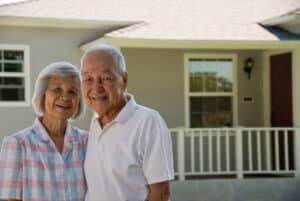
With populations continuing to age, the demand for care homes and other senior living facilities is increasing. While there are many factors involved in running a successful care home, the safety and security of the residents should always be paramount.
Falls alone pose a significant concern, with approximately 1,800 nursing facility residents’ deaths per year being attributed to a fall. Between caring for elderly people and ensuring that the building itself is safe and secure, managers and staff have a lot to contend with. The last thing a care home manager wants to find is a demand letter on their desk from a resident’s relative seeking compensation due to a completely preventable accident or security breach.
Here are some best practices for ensuring optimal care home safety and security for elderly people.
Building safety and security
Before we get into ensuring safety and security within the walls of a care home, let’s first ensure that the building itself is safe and secure.
Care homes should have security measures in place to prevent any unauthorized access to protect their residents from the threat of intruders. These measures typically include the use of CCTV security cameras, access control systems, and other monitoring tools, such as thermal surveillance cameras, many of which have the capability to detect and recognize a person or object in virtually any lighting condition.
Other safety measures to be installed and maintained include fire alarms, smoke detectors, and any other relevant safety features. Safe, reliable accessibility for residents with limited ability is also paramount.
Comprehensive staff training
Another vital factor when managing care home safety and security is to deliver comprehensive staff training. All staff should be trained in safety and security protocols, such as emergency and evacuation procedures, fire safety, and the handling of hazardous materials.
In addition, staff should receive training on the specific needs of the elderly residents, such as how to identify signs of abuse or neglect, how to prevent falls and other accidents, and how to manage challenging behaviors.
Regular health and safety assessments
Before being admitted into a care home, all residents should undergo a comprehensive health and safety assessment. These assessments should include a review of the resident’s medical history, current medications, and any specific health conditions or concerns.
Additionally, the assessment should evaluate the resident’s mobility and other physical abilities, as well as any cognitive or mental health issues. This information can help care home staff develop individualized care plans that address the specific needs of each resident to optimize their safety while living in the facility.
Medication management
Proper medication management is crucial to the health and safety of care home residents. Care home staff should be trained to manage and administer medications safely, including storing medications securely and ensuring that residents receive the correct doses at the correct times.
Furthermore, care home staff should be trained to recognize and respond appropriately to any adverse reactions to medications. Good communication with each resident’s healthcare provider is also necessary to ensure that medication regimens are appropriate, up-to-date, and well-understood.
Fall prevention
According to the Nursing Home Abuse Center, between 50% and 75% of residents in nursing facilities suffer a fall each year.
Falls represent a serious risk to elderly people, and care homes should have measures in place to prevent them and minimize the risk of injury. This can include the use of mobility aids, such as walkers and canes, the installation of handrails and grab bars, and ensuring that the environment is free of obstacles and hazards.
A focus on well-being
Safety also extends out to physical, mental, and emotional well-being and how effectively these aspects of health are being supported.
Nutrition and hydration
Proper nutrition and hydration are critical to the health and well-being of care home residents. Care home staff should be trained to provide healthy and nutritious meals that meet the specific dietary needs of each resident.
Additionally, care home staff should monitor residents’ hydration levels and encourage them to drink fluids regularly. This can help prevent dehydration and other health issues, and improve overall health and well-being.
Social engagement and emotional support
Finally, care home residents should be provided with opportunities for social engagement and emotional support. This can include group activities, one-on-one conversations, and other forms of social interaction that can help to prevent feelings of loneliness, depression, and isolation.
Additionally, care home staff should be trained to recognize and respond to residents’ emotional needs, and to provide appropriate emotional support when needed.
In conclusion, ensuring care home safety and security for elderly people requires a comprehensive approach that addresses a wide range of health, safety, and security concerns.
Final thoughts
By ensuring that these and any other relevant safety and security measures are prioritized, care homes can provide a safe and comfortable environment that promotes the health and well-being of elderly residents, while minimizing the risk of injury, accident, or security breach.